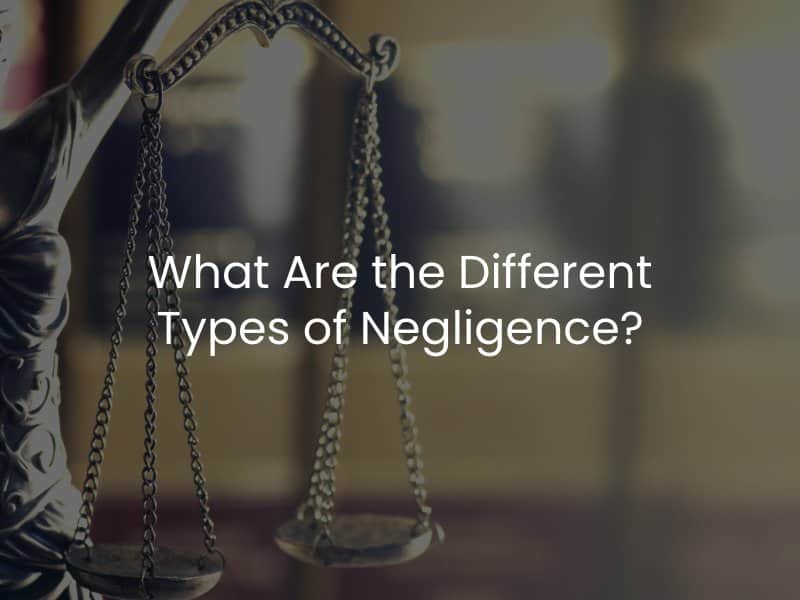What Are the Different Types of Negligence?
When personal injury claims arise, it is crucial to establish liability in order for the victim to recover compensation for their losses. Determining liability requires proving negligence. The concept of negligence can be difficult to understand, particularly because there are various “types” of negligence that you may hear about. Each state has different laws regarding the types of negligence used when determining personal injury claims. To ensure you are maximizing the effectiveness of your case, hire an experienced injury lawyer in your area.

Contributory Negligence
In a contributory negligence system, the injury victim is unable to recover any compensation if they are responsible for causing their own injury in any way. Even if an injury victim is only 1% responsible for the incident, they are barred from recovering compensation under this system. There are a few states left in the U.S. that use contributory negligence systems. Most states have shifted away from this type of negligence law.
Modified Comparative Negligence
One of the most common negligence systems used in the U.S. is called modified comparative negligence. In a modified comparative negligence system, injury victims can recover compensation as long as they are not more than 50% at fault for their own injuries. However, the total amount of compensation the injury victim receives will be reduced based on their percentage of fault.
Pure Comparative Negligence
13 states across the country operate under a pure comparative negligence system. Under this type of system, an injury victim can recover compensation regardless of how much fault they had for their own injuries. Even a person up to 99% at fault can recover compensation. Again, similar to modified comparative negligence, the total amount of compensation the victim receives will be reduced based on their percentage of fault.
Gross Negligence
If the actions of an at-fault party show complete disregard for the safety of others, or if their actions were intentional, they could be found guilty of gross negligence. This differs from ordinary negligence, where a person generally did not mean to cause harm to somebody else. In cases of gross negligence, it is generally understood that the at-fault party knew that their actions were likely to cause harm to others.
Vicarious Negligence
Vicarious negligence is a form of negligence used to hold one party responsible for the actions of another party. In order for this to make sense, it is better to provide an example. Take, for instance, a delivery truck driver who causes an accident. When this happens, it may be possible to hold the employer of the delivery truck driver responsible for the driver’s negligence. In other words, the employer could be held vicariously negligent because they have responsibility over the driver while the driver is performing work-related duties.
Similarly, a parent could be held liable for the actions of a minor child, or a dog owner could be held liable for the actions of their pet.
Work with an Attorney for Help with Your Case
If you or somebody you care about has been injured due to the careless or negligent actions of somebody else, contact an injury lawyer as soon as possible. When you have an experienced advocate by your side, your chances of successfully obtaining maximum compensation increase significantly. An attorney can use their resources and legal expertise to fully investigate the case and negotiate with aggressive insurance carriers. Your focus, as an injury victim, needs to be on recovering. Your attorney can handle every aspect of the case for you. (www.iasp.info)